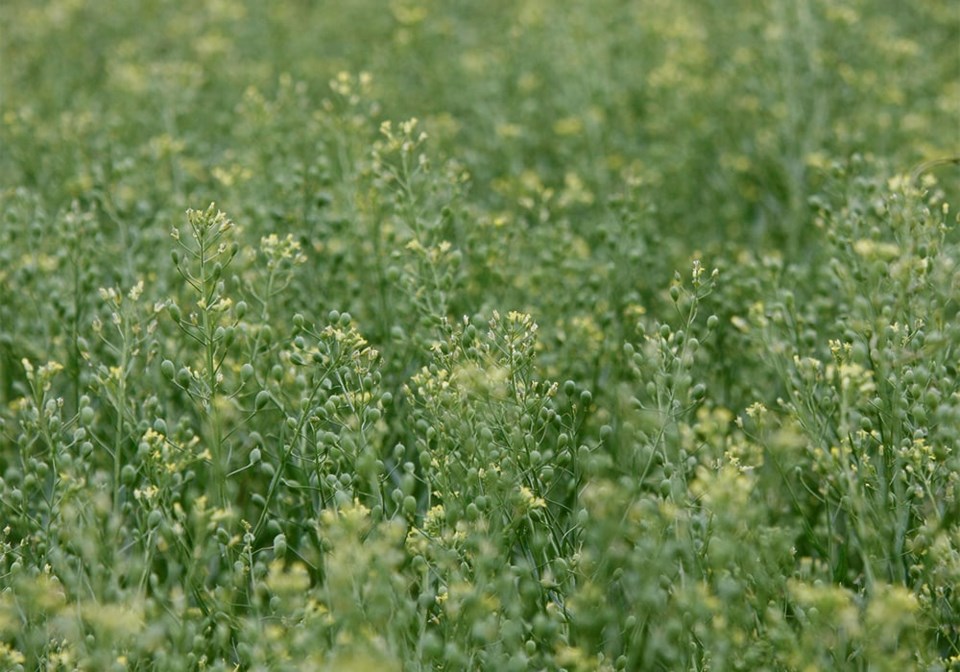WESTERN PRODUCER — Camelina might not be the first oilseed crop variety that comes to mind in Western Canada, but it may be one to consider as dry conditions continue in many parts of Alberta and Saskatchewan.
Carlene Sarvas, Smart Earth Camelina Corp.’s production lead, said the oilseed does well in dryland and irrigated fields, but it’s also a good cover crop that might provide an option for producers looking at mitigating risks of another dry year.
Sarvas said camelina is a short season crop that matures within 85 to 100 days and is both drought and frost resistant. There are also both spring and winter biotypes, making it a good option in either season under current dry or variable conditions.
She said the Saskatoon-based company has focused on the spring variety for more than a decade, improving its agronomics for Western Canada. However, it has also been exploring the crop’s potential as a winter crop for the past three years.
In addition to having natural resistance to flea beetles, it is also a new enough crop that it hasn’t developed issues with other common prairie pest insects.
“We’ve been producing since 2013 and I haven’t seen any major outbreaks with insects, and it’s fairly decent on the disease level too,” said Sarvas.
“It’s a pretty easy crop to grow.”
Under irrigation during times of limited water supply, the crop provides a good option in a rotation because it requires most of its moisture during establishment.
“That’s crucial for camelina because it’s such a small seed, you have to seed it very shallow, so having that moisture at seeding is crucial. Once it is established, it actually has very good drought tolerance,” said Sarvas.
“You can turn off the tap and it has been shown to outperform canola in dry conditions for yield.”
The winter variety is also a good option as a cover crop with flowering in mid-May or earlier and an early harvest.
“Then you are not in the heat and when there is the drought, it’s already done most of its lifecycle before demanding high water,” said Sarvas.
Camelina shouldn’t be seen as a replacement for canola, she added, but as an alternative for areas where the crop underperforms.
“It is targeted for those areas that you cannot get your canola to perform and we’re seeing more and more of those areas, especially in the last four or five years, because we’ve been in a drought cycle,” said Sarvas.
The input costs associated with canola are rising, as are the yields necessary to get a good return on investment, while camelina offers low costs with comparable gains.
Seeding costs for camelina are in the $30 to $35 an acre range and requires less fertilizer.It is used for biodiesel production, but due to its high omega 3 aspects, Sarvas said the company has been targeting the pet food sector. As well, larger producers can consider growing camelina as a feed source for aquaculture.
Smart Earth offers closed contracts, selling seed direct to producers while buying back their full production.
Sarvas said the company has been able to use agronomics to increase the size of the seed by 30 to 40 percent, which helps with both emergence and harvesting, and it has developed a Group 2 tolerant variety.
“That’s why we do a closed contract. We sell the producer our proprietary seed, they grow it for us, there is a full act of God clause in our contract so if for some reason there is no production, we don’t demand anything from them.”
Bookmark SASKTODAY.ca, Saskatchewan's home page, at this link.




